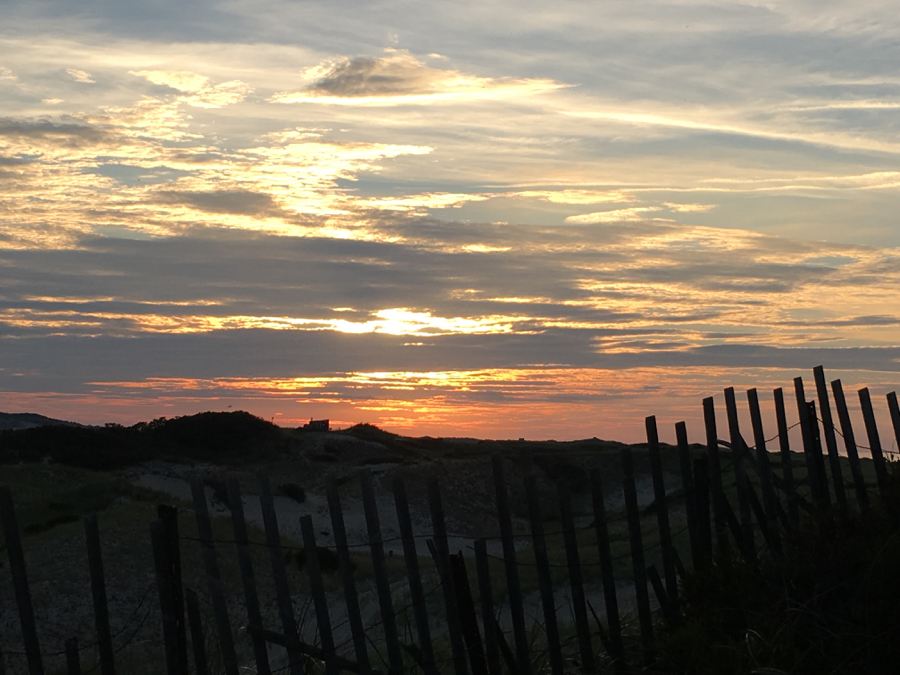I’ve bought time, the most beautiful thing for which we pay. Time to act out an old monkish dream of a spare cell facing out over water.
Time apart, a moratorium on my own life into another, pretending to simplify, to distill.

Being on an artist’s residency makes me feel attached to the many artists, writers, thinkers, drinkers (many long dead) before me who paced this wooden shack. But it’s a light attachment. This place is wholly the present. The frenzied dance of the gleaming grasses, the shifting waters shoved forward by the constant wind seems to be all that is.
I see a book on a shelf, “The Salt House” by Jan Gelb, who lived in this room long ago. I open a page to a list of those who originally pieced together this string of shacks riding the crests and valleys of the Provincelands dunes.
“There are Frenchie Chanel, Sunny Tasha, Peg Watson, Boris Margo, Dune Charlie, Phil Malicoat, Ray Hunzinger, and of course, Hazel.”
I turn another page to a quote by the artist Hans Hoffman, a portentous observation that I know will come to haunt my desire to draw what I see for the next few weeks:
“Nature is always the artist’s source of inspiration, but in its spiritual, not physical sense. In nature every object exists in relationship to other things. This is what we must seek.”
Within one day the peace other visitors write about in the shack journals is broken by an internal pressure to release onto paper the collection of shapes in the simple room. Clear-cut and lifted way from clutter, things are achingly defined.
The artist’s stupefying drive to capture our perception of a place, an object — to what do we owe this unholy urge?
Artists try to seize and keep things until they can be fully, slowly digested. These things are like fleeing antelope, us the old lions.
The problem is observation does not rest and has no end.
When I set out to pin down the shape of the glass oil lamp, it is not just its breathtaking shape against the windowpane. It is all the colors of the grasses, sky, ocean trapped in its glass. It’s the brass mound where the short tongue of mesh is lit, the spiking prongs that grip the glass chimney. It’s the downward thrust of the glass pedestal on which the squat glass bowl, full of clear kerosene, swells upward in a swirl of Victorian patterns cascading up its sides in white and ruby red. It’s the tiny chip of a frantic kite distant in the sky beyond the window, its fabric glinting with the same red as the lamp, the same gold of the grass, the same blue as the sea.
I could, should go on and on until nothing is left out, until the whole world is not left out. It is a nightmare of beauty.
I know escape is useless. If I go outside to get away from the limitlessness, the wild roses’ perfume will jezebel me.
I’m aware, as always, that the attempt to capture will capture me without me able to capture it. The antelope wins.
Ellen Lebow spent part of May at the Margo-Gelb dune shack making white line prints six years ago, she thinks.
